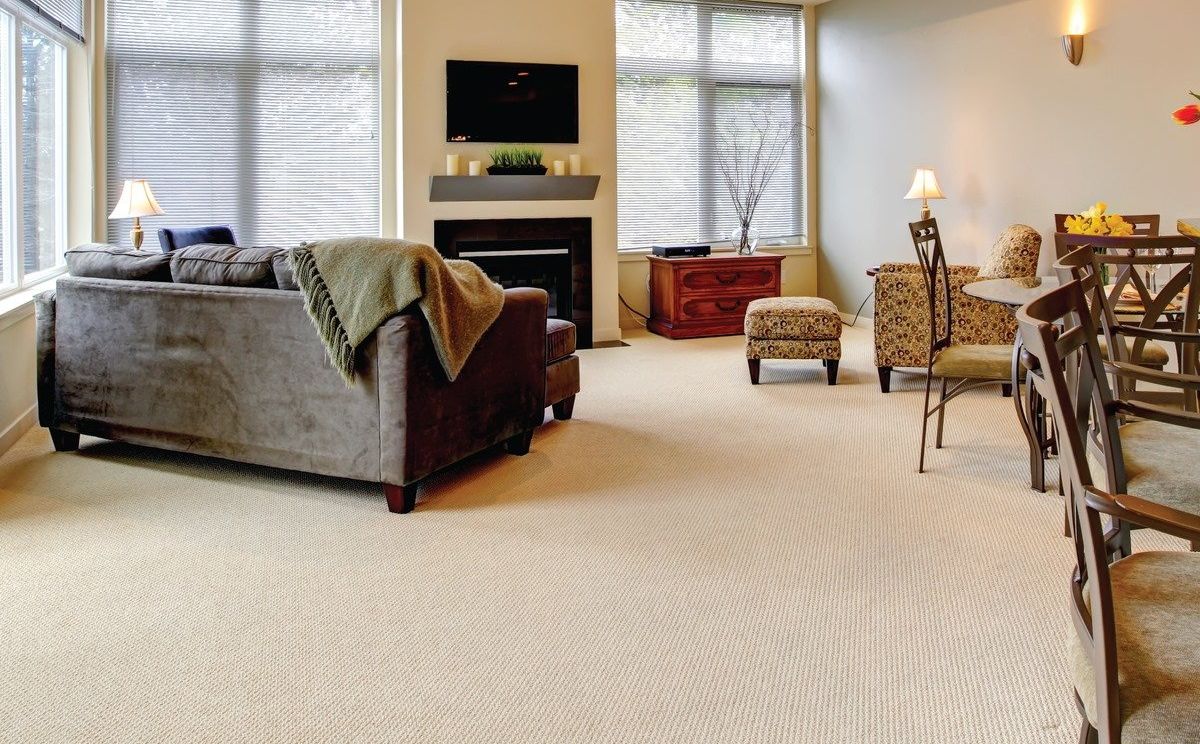What Is Wall-to-Wall Carpeting? A Complete Guide for Homeowners
If you’ve ever walked into a home and felt a soft, continuous carpet underfoot stretching from wall to wall, you’ve already experienced what wall-to-wall carpeting is all about. As one of the most comfortable and versatile flooring options available, wall-to-wall carpeting has been a favorite among Cincinnati homeowners for decades — and for good reason. It brings warmth, style, and a cozy feel to any space, all while helping reduce noise and improve insulation.
At Cincy Preferred Flooring, we help homeowners throughout Cincinnati and the surrounding areas choose flooring that fits their lifestyle. If you’re thinking about carpet for your home, this guide will help you understand your options so you can feel confident in your choice.
Let’s explore what wall-to-wall carpeting is, how it’s installed, the types available, and whether it’s the right flooring option for your space.
What Is Wall-to-Wall Carpeting?
Wall-to-wall carpeting is carpet installed across the entire floor surface of a room, secured to the subfloor with tack strips along the perimeter. Unlike area rugs — which only cover part of the room — wall-to-wall carpet provides full, seamless coverage. This style of carpeting is custom-cut from large rolls to fit each unique space. Once installed, the carpet lies flush against the walls, creating a uniform, finished look.
Many homeowners love wall-to-wall carpet because it:
- Creates a warm and comfortable surface underfoot
- Helps with sound absorption
- Enhances insulation and energy efficiency
- Comes in countless textures, colors, and materials
Where Did Wall-to-Wall Carpeting Come From?
While carpeting as a concept has been around for thousands of years, wall-to-wall carpet became widespread in American homes during the mid-1900s. Synthetic fibers like nylon made carpet more affordable and durable, and homeowners quickly embraced the comfort and decorative appeal it brought to living rooms, bedrooms, and family spaces.
Today, modern technology has led to softer carpets that are more stain-resistant and durable than ever before — making them a great fit for busy Cincinnati households.
How Wall-to-Wall Carpeting Is Installed
Professional installation is key to achieving the best performance and longevity from wall-to-wall carpet. At Cincy Preferred Flooring, we follow a detailed process to ensure the finished product is long-lasting, secure, and visually seamless.
Here’s a simplified overview of how wall-to-wall carpet is installed:
- Measure the room: We take precise measurements to determine how much carpet is needed and plan seams, if required.
- Remove existing flooring: Old flooring is removed and disposed of properly.
- Prepare the subfloor: We check and correct uneven spots so your carpet lies smoothly.
- Install tack strips: Tack strips secure the carpet along the perimeter of the room.
- Add carpet padding: Padding adds cushioning underfoot, improves insulation, and helps extend carpet life.
- Cut and stretch carpet: We roll out the carpet, cut it to size, and stretch it to ensure a secure, wrinkle-free finish.
- Trim edges and finish: The carpet is trimmed to fit tightly against the walls and tucked for a clean look.
Professional installation ensures your carpet won’t buckle or ripple over time—and gives your home a clean, polished look.
Types of Wall-to-Wall Carpet
Modern wall-to-wall carpeting comes in a variety of styles, fibers, and textures. Here are a few of the most popular options Cincinnati homeowners choose.
Carpet Fibers
Synthetic fibers make up the majority of today’s wall-to-wall carpet because they’re durable, affordable, and easy to clean. Common materials include:
- Nylon – Durable, resilient, and versatile; great for high-traffic areas.
- Polyester – Soft and budget-friendly; good for moderate-traffic spaces.
- Olefin – Moisture-resistant; commonly used in basements and indoor/outdoor areas.
- Wool – A natural fiber known for luxury and softness; higher price point but long-lasting.
Your lifestyle, budget, and maintenance preferences will help determine the best fiber for your home.
Carpet Styles
Carpet style influences both comfort and appearance. Popular choices include:
- Cut pile – Soft, plush texture (like Saxony or frieze)
- Loop pile – Tightly looped for durability (like Berber)
- Cut-and-loop – Combination of texture and pattern
Each style offers a different look and feel, so it’s worthwhile to explore samples in person.
Where Wall-to-Wall Carpet Works Best
Wall-to-wall carpet can be used throughout much of the home, but certain spaces benefit more than others. Ideal areas include:
- Bedrooms
- Living rooms
- Family rooms
- Playrooms
- Finished basements
- Home offices
Carpet is especially useful in multi-story homes where noise reduction is important. Families with children or pets often appreciate the softer, safer surface when compared to hard flooring. Rooms that experience frequent moisture — such as kitchens, bathrooms, or laundry rooms — are not ideal candidates for wall-to-wall carpeting.

Benefits of Wall-to-Wall Carpeting
There’s a reason so many Cincinnati homeowners choose carpet year after year. Here are some of the biggest benefits:
- Comfort: Nothing beats the softness and warmth of carpet underfoot. It’s especially cozy in bedrooms and living rooms.
- Improved insulation: Carpet and padding help retain heat in winter, keeping energy bills more manageable.
- Sound absorption: Carpet reduces noise from footsteps, voices, and electronics — great for households with kids or pets.
- Safety: With a cushioned surface, carpet can help reduce injuries from slips and falls.
- Design versatility: With thousands of colors and patterns available, you can customize your look to match any décor style.
- Budget-friendly options: Carpet can be more affordable than many hard flooring options.
Are There Downsides?
As with any flooring, wall-to-wall carpet has its considerations. Potential drawbacks include:
- Can stain if not properly maintained
- May require more frequent cleaning
- Not ideal for moisture-prone spaces
- Certain lower-end options wear more quickly
Modern carpet technology has addressed many of these concerns — especially stain resistance — but it’s still important to choose the right style and fiber for your lifestyle.
How to Maintain Wall-to-Wall Carpeting
Keeping your carpet clean and looking great doesn’t have to be complicated. Here are a few simple tips:
- Vacuum at least once a week (more in high-traffic areas)
- Clean spills quickly
- Schedule periodic professional cleanings
- Use entry mats to reduce dirt tracked indoors
- Rotate furniture to avoid permanent dents
With proper care, quality carpeting can last many years.
Signs It’s Time to Replace Your Carpet
If you’re unsure whether you need new carpet, here are a few signs to look for:
- Matting or crushing in high-traffic areas
- Stains that can’t be removed
- Persistent odors
- Ripples or buckling
- Wear along stairs or entryways
If you spot any of these, it may be time to replace your carpet with a fresh, comfortable option.
Is Wall-to-Wall Carpet Right for Your Home?
Many homeowners search “what is wall to wall carpeting” when trying to decide whether it’s the right fit for their home. Wall-to-wall carpet is an excellent choice for those who want comfort, affordability, and design flexibility. It’s ideal for bedrooms, living spaces, and places where you want a warm, inviting feel.
Families with young children love the safety and softness. Those who value warmth and quiet appreciate the insulation and noise-reduction benefits. It all depends on how you use the space and what you value most.
If you live in the Cincinnati area and are considering wall-to-wall carpet, we’re here to help. At Cincy Preferred Flooring, we can walk you through samples, explain the differences between materials, and help you choose the perfect carpet for your home and budget.
Ready to get started?
Reach out today to schedule a free estimate or visit our showroom to explore your options. We look forward to helping you create a space you love.


